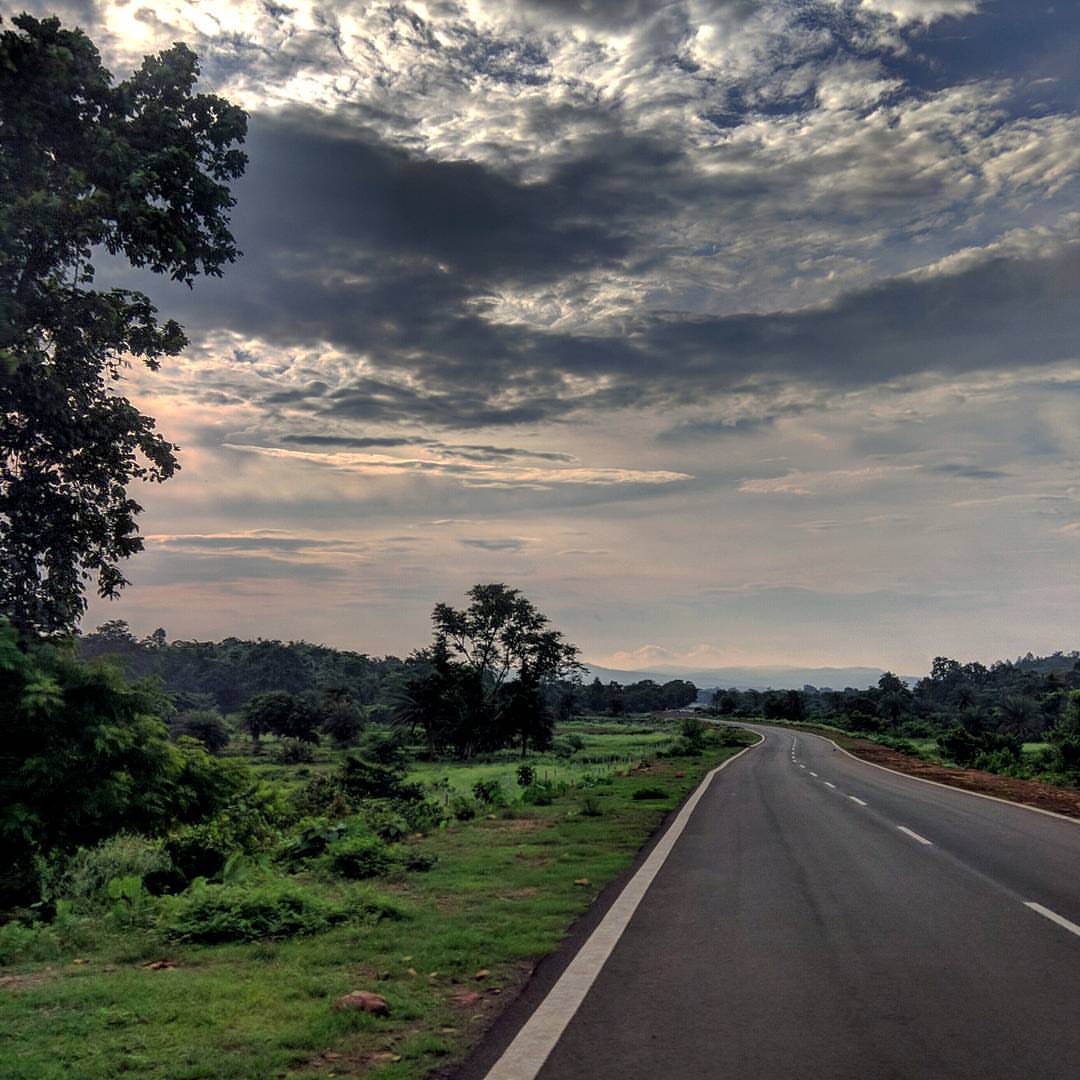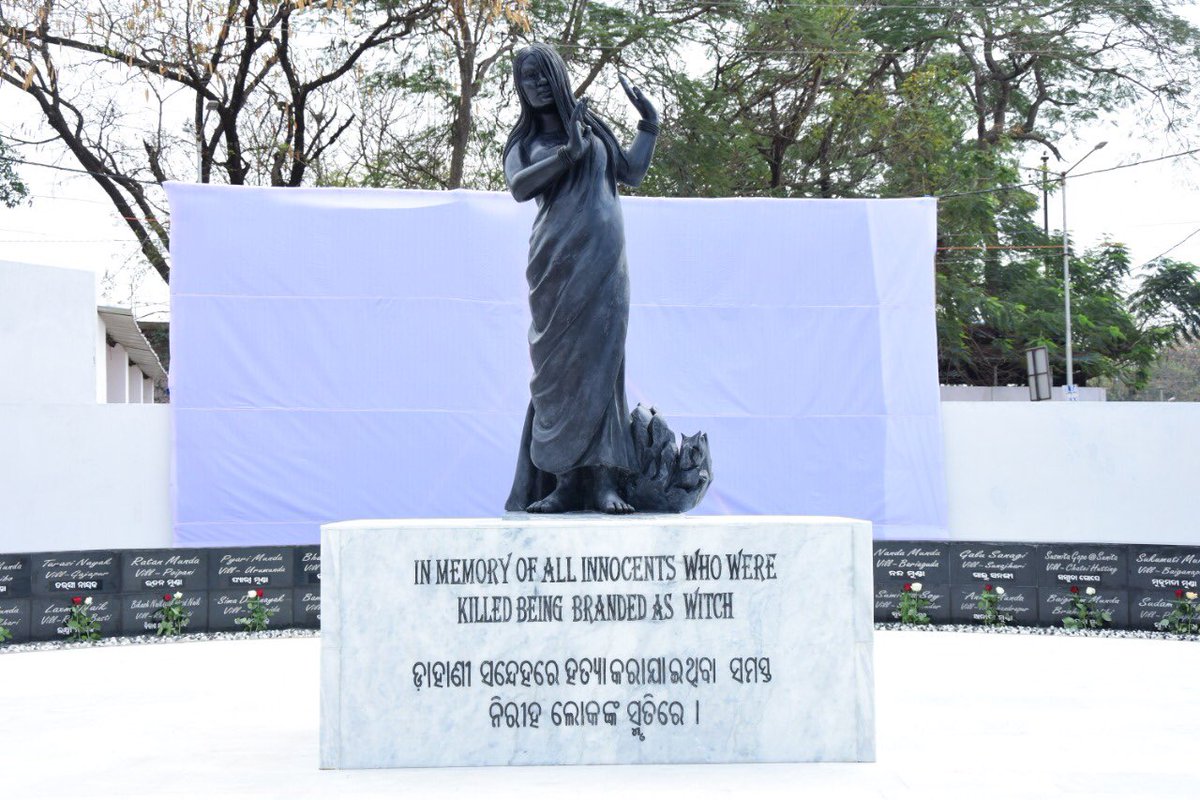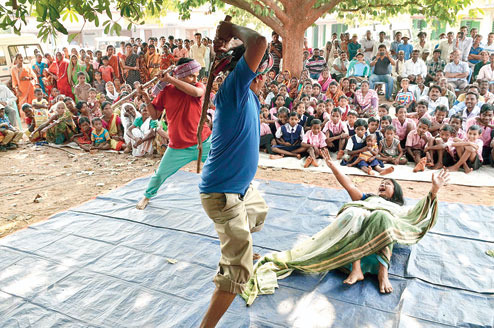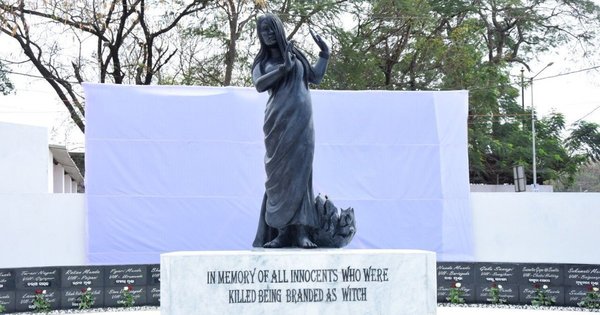Disclaimer: This story discusses violence against women, sexual assault, public shaming, and lynching, which may be distressing to some readers.
I was born in an Indian village where the fields and hills remain as lusciously green and peaceful today as they were two decades ago.
The same, however, cannot be said about its inhabitants.
Right before I shifted to Malaysia, I visited the village after almost a decade.
Moved by the sight, I snapped a couple of photos of the gorgeous view. The feeling of content soon gave way to despair as soon as I was inside the village. Memories of all that had happened there came flooding back. And I was suddenly reminded why my mother had sent me away while she still had the chance.
Because as peaceful as the view appears to be this photo I snapped at the time, the village from inside is exactly the opposite; it’s ugly, casteist, and blissfully ignorant of its own failings.

It was the winter of 1997. The mercury had dipped to -1°C.
The village, being a predominantly hilly area with rolling uplands and the Bansloi River flowing outside its borders, was covered in fog.
It was early morning. I had gone to the fields to take a dump (it was normal for us villagers to poo in the open around the fields or near the ponds, regardless of how extreme the temperature would be).
I was not done yet when I heard the shouts of “daayan, daayan! Maro, maro!” (witch, witch! Grab her, beat her!)
As I looked up, I saw a horde of men — with stones in their hands — emerging from outside the fields and running towards the pond where a figure of a woman holding a boy appeared through the fog.
I immediately ran to the pond to clean myself and that’s when I saw that the boy in the woman’s arms was one of the kids from my school who had gone missing a few days ago.
He was semi-conscious and laid in her arms. I couldn’t see the woman’s face as the pallu, the decorated end of the sari that usually hangs on the left shoulder, was covering her head.
About a few months before that morning, there were cases of parents reporting that their kids went missing after leaving home to go to school or market. It’s like they vanished into thin air.
The parents of the missing children were aghast, others were scared. Some were angry.
Before that morning, no one knew what happened to the missing kids.
There were rumours. About a witch. And that this witch was eating the kids. With time, the rumours took the shape of personal stories when some of the villagers claimed to have sighted the witch.
Before I go further, there’s something you all should know about the practice of hunting witches, who are known as daayans in India
This belief system has claimed the lives of more than 1,150 women, who were branded as witches in my home state in the years between 1991 and 2010, according to India’s National Crime Records Bureau.
The number is much higher across the country.
“Like the proverbial tip of a very deep iceberg, available data hides much of the reality of a problem that is deeply ingrained in society. It is only the most gruesome cases that are reported — most cases of witch-hunting go unreported and unrecorded,” according to New Delhi-based Partners for Law in Development.
Caste-based discrimination, too, plays a huge role in witch-hunting there.
Almost all the women who are accused of witchcraft and murdered are from lower or oppressed castes. Their accusers, more often than not, are members of the upper or dominant castes.
“Victims of witch-hunting are usually old or widowed women. These women are victimised for their property, or due to problems in the family or for sexual exploitation,” according to Vasavi Kiro, a human rights activist in the Jharkhand state, where she was the member of its Women’s Commission.
Witch-hunting, in fact, is such a social norm in most regions of India that two of the states, Bihar and Jharkhand, where the practice is particularly prevalent, have enacted a law against it.
Called the Prevention of Witch (Daain) Practices Act, the law was enacted in 1999; however, it remains woefully inadequate for deterring those who brand and persecute women as witches.
According to a petition filed by the Cornell International Human Rights Clinic, the practice appears to be on the rise. For example, 700 women were killed between 2004 to 2005, and 700 women were killed in 2006.
In 2014, Debjani Bora, a national-level medal-winning javelin thrower, was branded a witch after the death of four people in her village in Assam, including one man who took his own life.
“Instead of finding out why all the deaths occurred, some village elders suspected a witch was driving the people to death and organised a prayer. As the villagers were chanting hymns, one elderly woman identified me as the witch and shouted that I should be punished,” Debjani was quoted as saying by BBC.
“I was blamed for all these deaths in the village, wrapped up in fishing nets, and beaten up severely.”
Debjani was one of the “lucky” ones, she was only beaten.
Others who have been branded witches have been made to do unspeakable things, like forced to swallow urine and human faeces, to eat human flesh, or drink the blood of a chicken, and gang-raped.
“In many reported cases recently, women who are branded as witches were made to walk naked through the village, were gang-raped, had their breasts cut off, teeth broken, or heads tonsured,” according to a 2014 report by Mint, an Indian publication that has written extensively on the subject.

Image via Asian Age
A scapegoat
Amidst the cases of kids going missing, parents stopped letting their children go out.
They barred them from going to school. It was as if there was a pandemic of a sort.
Local police had started patrolling the village and on some days, even the outskirts.
But the cases kept increasing. No one could explain what was happening. Authorities were of no use, either. Such situations often make people abandon reason. So they did.
The rumours of a witch eating the missing kids became so prevalent that men of the village soon started singling out single or widowed women to brand them as daayans.
However, nothing would come of their allegations, mostly because the women they singled out were known to others in the village or their allegations were not convincing enough.
All that changed that morning.
The mere sight of the woman near the pond with one of the missing kids was enough. It had them convinced that she was indeed a witch, who had been eating their children.
As I stood on one of the stone slabs near the pond, I watched the people of my village run towards that woman, who had never been seen in the village before that morning.
And even before they could reach her, they started pelting the stones at her.
It appeared as if in their anger they didn’t care about the kid who was still in her arms. One of the stones went past the woman and almost hit me. Several of them hit the kid in her arms. But the pelting didn’t stop.
A few hours later, when the sun shone through the morning fog, the villagers had gathered in the farmers’ market with the woman lying in the middle. Her clothes had been torn and she was covered in blood.
The villagers, meanwhile, with red in their eyes and stones in their hands, seemed hypnotised.
They also kept shouting “daayan hai ye, daayan! Kha gayi humare baccho ko. Maro isey!” (She is a witch. She ate our children. Kill her.) and pelting stones at her.
With each stone pelted, the intensity of their shouts grew.
At which point something unexpected happened.
The woman — bleeding and shaking — stood up, screaming and thumping her bare chest.
I remember flinching at the sight.
The stone-pelting stopped.
She continued.
She thumped, and thumped, as if inviting the village to continue, too, with the pelting.
I still remember what happened next as if it were yesterday
They forgot the stones and started slapping and kicking and punching her.
When she could not stand on her legs, and as she fell to the ground, they started tossing her in the air. They kept doing this each time she hit the ground. It was harrowing. But no one bothered to intervene.
I watched from the sides along with other kids, while women of the village kept trying to cover our eyes.
Once the villagers got bored of tossing the woman in the air, they tied her to bamboo sticks, hoisting her almost lifeless body like some sort of a flag and started circling around, ready to start a procession.
As my father, who was a local politician and played an equal role in the violence, would later describe it, “the villagers held a victory march” while parading the woman’s body on the bamboo sticks.
No one to speak for her

Image via The Telegraph India
Because the entire village was involved in that woman’s murder, no one was there to speak for her when the police finally arrived at the scene. It wouldn’t have mattered anyway.
The community usually discourages the police from registering a report, called ‘FIR’ in India. And when they do register an FIR, say for murder, there is a maximum punishment of three months for the culprits.
In most cases, the accused are let off immediately, or after a night in police custody.
Meanwhile, the ordeal she was put through — from being beaten, stripped, to paraded while hoisted on bamboo sticks — before she was murdered would later be narrated as a story about how good always triumphs over evil. I’ve had my own grandparents often describe the whole thing with pride.
And yet, children continued to go missing.
This story is a personal essay by the writer. You too can submit a story as a SAYS reader by emailing us at [email protected].
These Malaysian organisations aim to help survivors of rape and sexual assault:
1. WOMEN’S AID ORGANISATION (WAO)
Operating hours: 24-hour
Contact: +603-79563488
SMS/WhatsApp: +6018-9888058
2. ALL WOMEN’S ACTION SOCIETY (AWAM)
Operating hours: Weekdays (9.30am – 4.30pm)
Contact: +603-78770224
WhatsApp: +6016-2284221 | +6016-2374221
Email: [email protected]
3. WOMEN’S CENTRE FOR CHANGE PENANG (WCC PENANG)
Operating hours: Weekdays (9am – 5pm)
Contact: +604-2280342 | +604-3988340
WhatsApp: +6011-31084001 | +6016-4390698
Email: [email protected]
4. SARAWAK WOMEN FOR WOMEN SOCIETY (SWWS)
Operating hours: Monday to Friday (9am to 5.30pm)
Contact: +6082-422660
SMS/WhatsApp: +6013-8044285
Email: [email protected]
5. SABAH WOMEN’S ACTION-RESOURCE GROUP (SAWO)
Operating hours: Monday to Friday (9am to 2pm)
Contact: +6088-280200
Email: [email protected]
6. PROTECT AND SAVE THE CHILDREN (PS THE CHILDREN)
Operating hours: Monday to Friday (8.30am to 5.30pm)
Contact: +6016-2273065 | +6016-7213065
WhatsApp: +6016-7213065
Email: [email protected]
7. INTERNET WATCH FOUNDATION (IWF)
Anonymously and confidentially report child sexual abuse content and non-photographic child sexual abuse images with IWF’s Reporting Portal.



